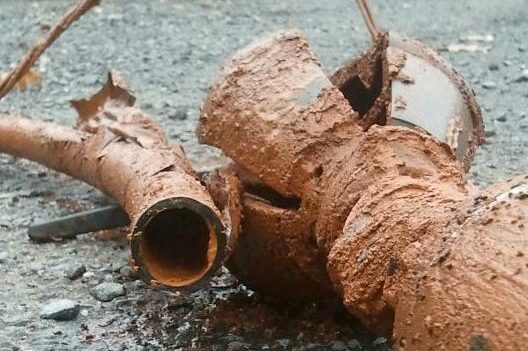
A common, highly unpleasant water problem in several household wells is a buildup of iron bacteria. The good news is that these microbes are harmless to your health, despite their name. The bad news is that the impacts they have on your well and plumbing systems can be annoying and disruptive to your daily water needs.
In this blog post, we’ll introduce a bit of background on these microorganisms, detail what effects iron bacteria in well water can have on your system, and run through some treatment and preventive measures you can take to deal with them — with the help, of course, from the experts at H2O Equipment!
What Are Iron Bacteria?
Sometimes more vividly called “iron-eating bacteria,” iron bacteria are particular kinds of microbes that utilize iron and manganese for energy. They do so by oxidizing soluble forms of these elements. Among the most notable genera of iron bacteria are Leptothrix, Gallionella, and Crenothrix.
Iron tends to be very abundant in soil and groundwater, common habitats for iron bacteria. It is one of the most common well water problems. When, for example, deoxygenated groundwater comes into an oxygen-rich environment, these microbes set to work transforming the dissolved ferrous iron into an insoluble form, ferric iron, which produces a rust-colored slime.
That byproduct, combined with the bacteria themselves plus their various biological residues, ends up creating a sludgy biofilm: Often seen along stream ways, but also capable of forming within your home well system.
Are iron bacteria harmful? They aren’t. Needless to say, however, the residue they produce can cause all sorts of headaches.
Iron Bacteria in Wells & Plumbing
If soil, surface water, or groundwater with iron bacteria gets into your well, which may happen due to compromised well casings, these microbes can multiply in your water supply.
This can have a wide range of effects, including altering the appearance, odor, and flavor of your drinking water, clogging up pipes, filters, and screens with what looks like an orange sludge, and enhancing corrosion. The environment created by iron-oxidizing bacteria can also encourage the growth of other microbes, including varieties producing their own unpleasant side effects.
The excretions get sucked into your submersible well pump and clog up the moving parts inside the pump. And they can clog the pipe that connects the well to your house, decreasing your water pressure and potentially causing damage to your pump. The pump will need to run longer to fill your pressure tank with water, putting stress on the motor and eventually burn it out.
Inside the home, the thick slime can coat household plumbing, clog up water treatment valves and turn to sludge inside water treatment tanks, requiring expensive swaps.
The iron bacteria excretions are encapsulated in slime, so water softeners are unable to remove it which leads to staining inside the home.
Common Signs of Iron Bacteria in Well Water
- Orange, slimy film in your toilet
- Clogged sediment filters
- Clogged pipes
- Premature pump failure
- Poor water pressure
- Musty, swampy, sewage-like odors
- Colored water
- Fouled water treatment equipment leading to costly repairs and tank swaps
If you’ve got iron bacteria in your well water, you’ll often see their rust-colored staining. Although they are not pathogenic, iron bacteria cause ongoing red or orange staining in your laundry, sinks, tubs, fixtures, appliances, and even your dishes.
And the slime generated by iron bacteria frequently will thickly line plumbing, clog up filters, screens, water treatment valves, and pipes, and turn to sludge inside water treatment tanks. All of this can translate to diminished water pressure and flow, malfunctioning pumps, water softeners, appliances, and other equipment, plus potentially expensive repairs or replacements.
You’ll also often notice an odd odor to your well water, with aromas perhaps of rotting vegetables or sewage. The flavor may also be unpleasant.
The environment created by iron bacteria can also be alluring to other annoying, yet harmless, bacteria called sulfur bacteria. This bacteria can make your water smell like rotten eggs, and iron bacteria can cause a musty, swampy odor.
Iron Bacteria Treatment & Prevention
Removing iron bacteria completely is often difficult, but you’ve got many options for controlling microbial levels such that you’re avoiding major problems.
In terms of iron bacteria filters, a cartridge filter is a good first step to protecting the plumbing and water treatment equipment. That said, you may find that you are changing the cartridge very frequently, costing you time and money.
Some treatment methods use a combination of chemicals and high-pressure cleaning to purge the bacteria. Depending on the well, the water chemistry, and the severity of the iron-bacteria problem, this can take anywhere from multiple days to a week and cost upwards of $6000.
A more economical approach to control the iron bacteria is with routine well chlorinations. While this won’t eliminate the microbes, it’ll keep the colonies at levels that won’t clog your plumbing, pipes, and water-treatment equipment.
Simply put, a well chlorination involves pouring bleach into your well and allowing it to sit — ideally for 24 hours. The bleach will kill most of the bacteria. After those 24 hours, you run water outside to flush the well to remove the chlorine and dead bacteria. That can take a few hours to a day or two depending on the severity of the problem.
If your iron bacteria issues are mild to moderate, we recommend performing a well chlorination yearly. For more severe infestations, you may need to do this treatment two to four times or so a year.
Routine chlorinations are extremely effective at helping control populations of iron bacteria, which in turn helps extend the life of your well pump, plumbing, and water-treatment equipment.
There’s also a few things that can be done to prevent iron bacteria from entering your well. Confirm your well casing is in good condition and that your well cap is correctly elevated. Learn more about our well services here.
How to Remove Iron From Well Water & Treat Iron Bacteria: Contact H2O Equipment For Professional Help
Get in touch with H2O Equipment Company for water testing, chlorination work, and other monitoring and treatment options targeting potential iron bacteria in your well system. We can also help you more generally as far as treating iron in well water.
Learn more about our well services here, and drop us a line by phone (1-860-267-0110 in East Hampton, toll-free at 1-800-905-0110) or email (Support@H2Oequipment.com).
